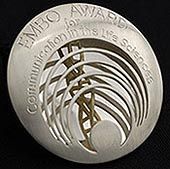Chronic fatigue syndrome is not linked to suspect viruses
Multi-site blinded study puts to rest the notion that these viruses cause the mysterious ailment
Advertisement
The causes of Chronic Fatigue Syndrome (CFS) have long eluded scientists. In 2009, a paper in the journal Science linked the syndrome — sometimes called myalgic encephalomyelitis (ME) — to infection with a mouse retrovirus called XMRV (xenotropic murine leukemia virus (MLV)-related virus). Given that affected patients often have symptoms consistent with a chronic infection, this viral connection seemed plausible, and the findings were celebrated as a major achievement for a complex disease that afflicts nearly 1 million in the U.S. Another study in early 2010 published in Proceedings of the National Academy of Sciences detected murine retrovirus-like sequences (designated pMLV: polytropic MLV) in CFS/ME patients, which provided further support for a viral theory.
Follow-up investigations by several laboratories were unable to detect XMRV or pMLV in CFS patients. However, none of them examined a sufficiently large population of well-characterized CFS/ME patients to rigorously test the validity of those findings. In the absence of a definitive study, many in the general public may have retained the opinion that XMRV and/or pMLV are responsible for the disease, and some clinicians continue the "off-label" prescription of antiretroviral drugs.
To definitively resolve this issue, the National Institute of Allergy and Infectious Diseases, part of the National Institutes of Health (NIH), commissioned a study under the auspices of the Center for Infection and Immunity at Columbia University's Mailman School of Public Health, in partnership with the Centers for Disease Control and Prevention, the Food and Drug Administration, and the NIH's National Cancer Institute and Warren G. Magnuson Clinical Center. The research is published in mBio.
A total of 293 subjects, 147 with CFS/ME and 146 matched controls, were recruited from six sites across the United States following extensive clinical assessments and laboratory screening. Clinical sites included Brigham and Women's Hospital (Boston, MA), the Simmaron Research Institute (Incline Village, NV), Miami Veterans Affairs Medical Center (Miami, FL), the Infectious Disease Clinic at Stanford University (Palo Alto, CA), the Levine Clinic (New York, NY), and the Fatigue Consultation Clinic (Salt Lake City, UT).
All CFS/ME patients chosen for the study: 1) were between the ages of 18 and 70; 2) had never suffered from another neurologic or psychiatric illness; 3) met both the "Fukuda" and "Canadian Consensus" criteria for CFS/ME; 4) were suffering from symptoms of a viral infection prior to CFS onset; 5) had reduced scores on the RAND36 quality-of-life survey (vitality subscale <35, social functioning subscale <62.5, role-physical subscale <50) and the Karnofsky Performance Scale (<70%); 6) were not pregnant, lactating, or less than 3 months postpartum to prevent maternity-related fatigue from being confused for CFS/ME.
Control subjects were recruited to match age, sex/gender distribution, race/ethnicity, and geographic location. Controls had no previous contact with individuals with CFS/ME. All potential subjects were then tested for evidence of any metabolic, endocrine, or infectious disease that might cause fatigue. Blood from CFS/ME and control subjects who met this selection criteria was collected for blinded XMRV and/or pMLV analysis using molecular, culture and serological methods, which were previously established in the individual laboratories where evidence of XMRV or pMLV had been reported or ruled out.
None of the laboratories found evidence of XMRV or pMLV in samples from the recruited CFS/ME or control subjects. For quality assurance of the molecular tests, separate positive controls (blood samples intentionally spiked with XMRV/pMLV) and negative controls (blood samples prescreened and lacking the retroviruses) were used and confirmed that the diagnostic assays were functioning properly.
Nine control and nine CFS/ME blood samples were positive for XMRV/pMLV-reactive antibodies. The accuracy of this assay cannot be determined because there are no positive controls in the general population with XMRV serology. Nonetheless, there was no correlation of antibody reactivity in blood from CFS/ME and controls.
Original publication
Harvey J. Alter, Judy A. Mikovits, William M. Switzer et al.; "A Multicenter Blinded Analysis Indicates No Association between Chronic Fatigue Syndrome/Myalgic Encephalomyelitis and either Xenotropic Murine Leukemia Virus-Related Virus or Polytropic Murine Leukemia Virus"; mBio 2012.




























































